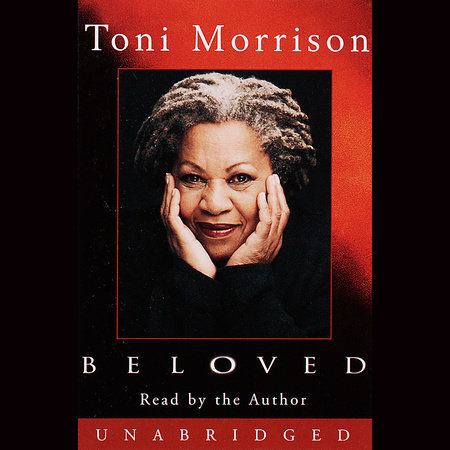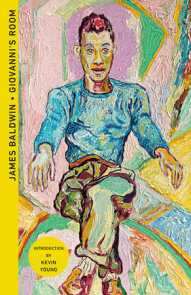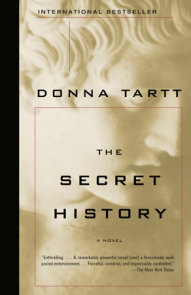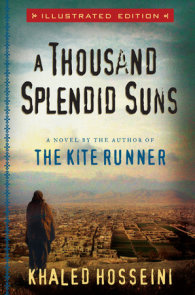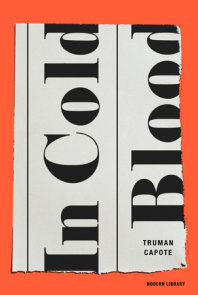READERS GUIDE
IntroductionNearly forty years after its publication, Toni Morrison’s 1987 novel Beloved continues its work of revealing to a new generation of readers the haunting legacies of slavery that reverberate through time, across space, and within communities. Shedding light on the experiences of formerly enslaved people with intimacy and reverence, the Pulitzer Prize–winning novel uncovers the wounds left by the violent horrors of slavery while balming them with its lyrical prose and moving message of love as a healing force in the midst of suffering and dehumanization.
For eighteen years, no one has entered 124 Bluestone Road save for its residents: Sethe, an escaped slave and mother of four; Denver, Sethe’s timid younger daughter; and Baby Suggs, Sethe’s mother-in-law, freed by a son who never got to see freedom for himself. Tucked in the outskirts of Cincinnati, Ohio, the three women’s lives are haunted by a mischievous presence in the house that no one dares to address, an apparition that shatters mirrors, crawls up the stairs, and leaves tiny handprints on a freshly baked cake. But when Paul D, an old friend from Sethe’s days on the Kentucky plantation Sweet Home, arrives and dispels the ghost, the residents of 124 are given a chance to start anew.
Trying to build a life together, Paul D and Sethe must contend with the memories of Sweet Home that persist in terrorizing them and the appearance of a mysterious young woman named Beloved who knows secrets from Sethe’s past that no stranger could possibly know. Certain that the woman is the ghost of her beloved older daughter made flesh, Sethe will stop at nothing to gain Beloved’s forgiveness for the crimes of her past. A haunting and unforgettable story, Beloved urges readers to bear witness to the corrupting brutalities of slavery and the power of community as a pathway to healing from collective grief.
The following questions and topics for discussion are designed to enrich your discussion and meditation on Beloved. We hope they deepen your understanding of the novel and inspire thoughtful engagement with this compelling and magnificently written story by Nobel Prize–winning author Toni Morrison.
Questions and Topics for Discussion
1. During her lifetime, Toni Morrison drew attention to the lack of historical markers to commemorate the lives of enslaved people and dedicated Beloved to the over sixty million who died during the Middle Passage. How does Beloved act as a memorial to preserve the memory of those who have been enslaved?
2. Return to the novel’s opening chapter. How do the eerie descriptions of 124 Bluestone Road and the history of its residents create a distinct mood and sense of atmosphere for the novel? What were your earliest impressions of the story and its characters based on these details?
3. In Beloved, the smell of sap, the sounds of a work song, or the retelling of a family story is enough to blur time and send characters slipping into the past, allowing the novel to convey settings and characters that are not in the present events of the story, such as Sweet Home and the prison camps of Alfred, Georgia; Sethe’s mother and husband; schoolteacher; and the Garners in a way that is palpable and enduring. What do these narrative choices illuminate about memory for each character, and how do they work to amplify the lasting wounds of enslavement?
4. Before Paul D’s arrival, no one had visited 124 Bluestone Road for eighteen years. Why do the townspeople avoid the house and those who live in it? What forces keep them from entering?
5. Who is Beloved? Where does she come from? What does her presence symbolize, and how does it interfere with Sethe’s “work of beating back the past” (page 86)? How is the uncanny used in Beloved to shed light on the nearly tangible quality of trauma in everyday life?
6. Describe Sweet Home. What do Sethe, Baby Suggs, and Paul D remember most about the plantation? How is Sweet Home transformed with the introduction of the new owner schoolteacher?
7. What circumstances lead the enslaved characters of Sweet Home to realize they cannot remain on the plantation? What was their escape plan, and how was it altered? Are those who escaped able to account for their comrades who did not make it? How must they cope with knowing and not knowing their fates?
8. The experience of Black migration is illustrated through Paul D’s journey from Sweet Home to the prison camp of Alfred, Georgia, and eventually to the freedom of the North. What do the narratives of the novel’s traveling characters reveal about the precarious state of Black life in America at this time?
9. One of the terrors of enslavement was its power to strip people of their humanity and sense of self through abuse, commodification, and animalization. Upon her departure from Sweet Home, what does Baby Suggs do to realize her new, free self?
10. What was your reaction to schoolteacher’s return and the events that followed?
11. Stream of consciousness is used to render the thoughts of Sethe, Denver, and Beloved as they appear in their minds. Why do you think Morrison chose to include these first-person perspectives in a novel that is told primarily through third-person narration? As a reader, what effect did this technique have on your experience of the novel and your understanding of these characters’ motivations?
12. Beloved is set in 1873 and makes references to the rhetoric of the Civil War, including the Fugitive Slave Act, the Dred Scott decision, and the abolitionist movement. How are the lives of the novel’s characters directly impacted by this political climate? Can Sethe’s crime be seen as an act of resistance against this legislation?
13. Compare Mr. Garner, schoolteacher, and the Bodwins. Though their views on slavery vastly differ from one another, how do they all still contribute to the systemic oppression of the novel’s Black characters?
14. Following three generations of Sethe’s family, Beloved sheds light on the challenges of motherhood amid the brutal system of enslavement. How does slavery corrupt the bonds between mothers and children? Why is the recurring image of Sethe’s milk central to her escape story? How do Sethe and Baby Suggs attempt to reclaim their family and endure the losses of their own mothers and children?
15. Beloved gives Black grief a physical presence that permeates through the freed community of Cincinnati, Ohio. In what ways do the novel’s formerly enslaved characters try to move forward from the horrors of the past.
16. Sethe recalls the days of Baby Suggs preaching in the clearing with the image of chestnut pods being shaken off the trees. What does this image represent, and how is it used again as the novel approaches its end?
17. Reuniting with Sethe, Paul D tells her, “You your best thing, Sethe. You are” (page 322). After the events of the novel, why do you think it’s imperative that Sethe knows this?
18. Return to the novel’s ending. Where does Beloved go? What becomes of her story? How is the fate of her story representative of the stories of enslaved people today?
Suggested Reading
Recommended ReadingsThe Water Dancer by Ta-Nehisi Coates
Ceremony by Leslie Marmon Silko
The Bluest Eye by Toni Morrison
The Underground Railroad by Colson Whitehead
The Book of Night Women by Marlon James
When We Were Birds by Ayanna Lloyd Banwo









